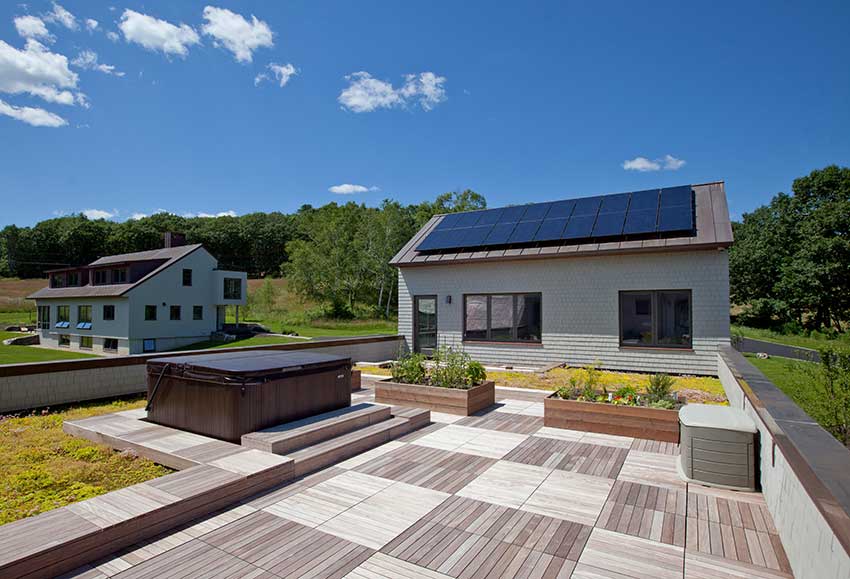Having It All
LEED v4.1 Requirements
Supply Chain Circularity
Recycled Content Disclosure: For products that include recycled content (pre- or post-consumer), the manufacturer has published additional details about the former source(s) of the recycled content:
- Disclose the amount of recycled content, pre- and post-consumer. For the credit purposes, pre-consumer materials must originate from sources other than the final product manufacturer, such as materials traded between companies or industries.
- Disclose what specific product the recycled material(s) were used in last. If they were sourced from more than one product, include percentages from each product type. Estimates, industry averages, or ranges are not acceptable.
- Disclose the location (country, state, or province) that the waste products were collected from.
- Disclose the location of the facility (country, state, or province) where waste was processed or converted into usable recyclable material or feedstock.
- Valuation: Products with less than 10% recycled content: value at ½ product. Products with 10% or more recycled content: value at 1 product.
- Safe & Circular: Manufacturers of products that contain specific types of recycled content shall provide a lab analysis of the recycled content that tests for common contaminants. The specific types of recycled content materials are glass cullet, wood fiber, plastics, polymers, asphalt, metals (aluminum, copper and steel) and ground rubber.
- Disclosure: Products with report that discloses the content levels of common contaminants, value at 1 product.
- Optimization: Products with a lab analysis of the recycled content that tests and shows acceptable levels of the common contaminants are present in the final product. Acceptable levels are below detectable levels or below the levels required for the same product made of virgin materials. Value at 1.5 product.
Zero Waste Manufacturing
Select products manufactured in a facility that reduces waste throughout the manufacturing process and is third party verified to divert 90% or more of all waste from landfill and incineration. Value at 1 product. Acceptable certifications are:
- GreenCircle Zero Waste to Landfill
- NSF Landfill-Free verification
- TRUE Certification (any certification level)
- UL 2799
Designed for Circularity
Select products that have been designed for disassembly, repair, or reuse at the end of use and for which the manufacturer has provided detailed information on maintenance, reuse, disassembly, and recovery options. Specifically, the product must be designed to be easy to separate, without destruction of components, and all necessary instructions for maintenance in-use and cycling at end of use are indicated or attached to the product or otherwise available to subsequent owners of the building. The following reports and certifications can be used to meet these requirements if they include all relevant information:
- Valuation: Compliant reports are valued at 1 product.
- Manufacturer has published a public type III EPD that includes an analysis of the life-cycle impacts from cradle to grave, including the recovery and disposal phases. The report must include LCA Stages for end-of-life modules and any relevant benefits or loads beyond the system boundaries. The product must also have publicly available instructions for how to take back, reuse, disassemble, or recover materials at end of use.
- The product has achieved Cradle to Cradle v3 Gold certification in the Materials Reutilization category and has published a nutrient management strategy that includes instructions for how to disassemble, reuse, or recover materials at end of use.
Closed Loop Products
Verified closed loop product: Products have been third party verified for recovering and recycling materials at the end of useful life. The manufacturer has an established process and system to take back their products for reuse and recycling into the same or similar products within the manufacturing operation.
- Certified Closed Loop, GreenCircle, value at 1.5 product.
- The product has achieved Cradle to Cradle v3 Platinum certification in the Materials Reutilization category and has published a nutrient management strategy that includes active nutrient cycling. Value at 1.5 product. Products-as-a-service: Select permanently installed products that are contracted through a products-as-a-service model and include take-back and cycling of the product at the end of use.
- Value at 1 product for every service contracted as a product-as-a-service agreement with a manufacturer.
- Refurbished or remanufactured products: Select permanently installed products that are refurbished or remanufactured. Qualifying products must be purchased directly from a manufacturer or refurbisher. Value at 1 product.
Additional attributes of product circularity are captured in other credits in LEED, such as recycled content percentage, Extended Producer Responsibility programs, construction waste reduction, and building materials salvage and reuse.
These are the advantages of the Circular Economy in principle. How are today’s innovative products embracing CE in practice?
MOVABLE WALLS ENHANCE DAYLIGHT, VENTILATION, AND ARE EASILY REPURPOSED
New innovations in movable wall installations allow for sophisticated design that makes a visual statement, using remarkable simplicity. Ultra-slim 1-5/16” panel rails and stiles create a minimal and uniform frame that produces uninterrupted views, while letting daylight flow freely to enliven interiors. With a maximum panel height of 13 feet and width of 7 feet, these sliding doors delivers expansive scale and elegance. Assemblies with a Performance Grade rating are ideal for exterior applications where high loads, limits on deflection, and heavy use are expected.
Despite the size of large sliding panels, advancements in sliding door construction provide effortless, one-handed operation. With a maximum panel weight of 700 pounds, panel loads are evenly distributed across the bottom rolling components resulting in a fluid, frictionless glide. The precision-engineered stainless-steel track further facilitates panel movement. Doors can offer a standard U-factor of 0.38 with a thermally broken frame using 1” insulating glass, CW40 Performance Grade rating, and 33 STC rating. Door hardware features a multipoint locking mechanism and integrated stainless-steel flat handle.
Bi-Folding doors have also attained the next generation in features and performance. A distinctly slim 4-3/4 inch vertical sightline and 1-7/16 inch panel rails reduce visible hardware to produce a minimal aesthetic that maximizes views. A bottom rolling system eliminates strain on the overhead beam. When closed, door hinges are completely concealed to deliver an elegant and streamlined look. Leading manufacturers provide superior thermal and structural performance using a 3-1/2-inch system depth. Doors distinguished with a CW40 Performance Grade rating make the ideal system for exterior applications where larger sizes, higher loading requirements, limits on deflection, and heavy use are expected. With a thermally broken frame and 1-inch insulating glass, bi-fold door assemblies have a standard U-factor of 0.36 and 32 STC rating.

Photo courtesy of CRL
Manufacturers have enhanced the design of bi-fold and sliding door construction to provide superior thermal and structural performance.
Bringing the Outside In
Sliding and bi-folding movable walls that feature slim, minimal frames maximize views and allow ample daylight to flow in. When opened, they also provide seamless transitions to the exterior. These benefits combined serve to improve the health and welfare of occupants.
Modern sliding door and bi-folding doors represent two innovative solutions to enhancing sustainability, energy efficiency, and occupant welfare in contemporary single-family housing. They are demount- able systems, which allows for recycling of aluminum extrusions, besides incorporat- ing recycled glass. They feature distinctly slim frames and panels that produce the expansive views that occupants look for. At the same time, they offer exceptional thermal performance using thermally broken frames and 1-inch insulating glass units that together can produce U-factors as low as 0.36. This effectively reduces dependency on air conditioning systems, improving the energy efficiency of single-family homes.










